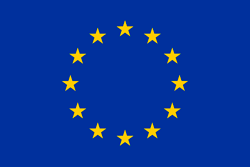"Achieving energy savings in district heating is of vital importance as buildings account for around 40% of Europe's energy consumption"
The energy crisis highlights the importance of greater thermal efficiency in district heating for a sustainable future
In the RELaTED initiative, new solutions have been developed and tested to help district heating networks achieve ultra-low temperatures of 40 to 45ºC. One of the biggest challenges faced by the project has been to integrate different technologies to achieve the expected results. RELaTED shows how lower temperatures in district heating systems combined with heat pumps reduce costs while keeping buildings warm.
According to Antonio Garrido, TECNALIA's Positive Energy Building researcher, "supplying heat to consumers at 40ºC instead of 60ºC or even 100ºC, for example, involves using heat pumps to increase the temperature again when it is needed. Because of rising outdoor temperatures, we also had to make sure that heat pumps can be used for cooling.
The concepts developed have been tested in four locations
- A large network in Belgrade (Serbia)
- A new urban development in Vinge (Denmark)
- An operational network in Tartu (Estonia)
- A corporate network at the Ertzaintza facilities in Iurreta (Bizkaia)
Energy savings in district heating by reducing heat loss
District heating networks must shift towards more sustainable and energy-efficient operating models. The demonstrators have achieved direct energy savings by reducing heat losses; the injection of waste heat into the grid has provided a revenue stream for businesses and additional heat for consumers.
In the Estonian pilot case, temperature reductions have achieved thermal savings of around 400 MWh/year, which represents a 20 % reduction in heat loss. At the Ertzaintza facilities in Iurreta, the temperature has dropped from 80ºC to 35ºC.
“Achieving these energy savings is vitally important because buildings account for around 40 % of Europe's energy consumption, and heating accounts for a large part of this," adds Antonio Garrido. "Lower operating temperatures and bi-directional flows could also enable mass absorption of renewable energy sources and waste heat, as well as reducing thermal losses".
Ultra-low-temperature district heating networks; RELaTED
Ultra-low temperature district heating networks, pioneered in the RELaTED project, could be a key part of Europe's energy transition. If this technology is replicated on a large scale across Europe, the energy savings could be significant.
In addition to TECNALIA, the Basque representation in the consortium includes the Basque Government, in relation to the heating network that was used as a demonstrator in Iurreta, and the Basque Energy Agency (EVE), which led the study of the development potential of this type of solutions for other regions, with practical application for the Basque Country.
INNOMETAL has also been responsible for developing solar systems that can be integrated into this type of heating networks. El Taller de Comunicación y Cía has been in charge of the dissemination of the project.
You may be interested in

**This project has received funding from the Horizon EU research and innovation program, in accordance with Subsidy Agreement No. 768567.
